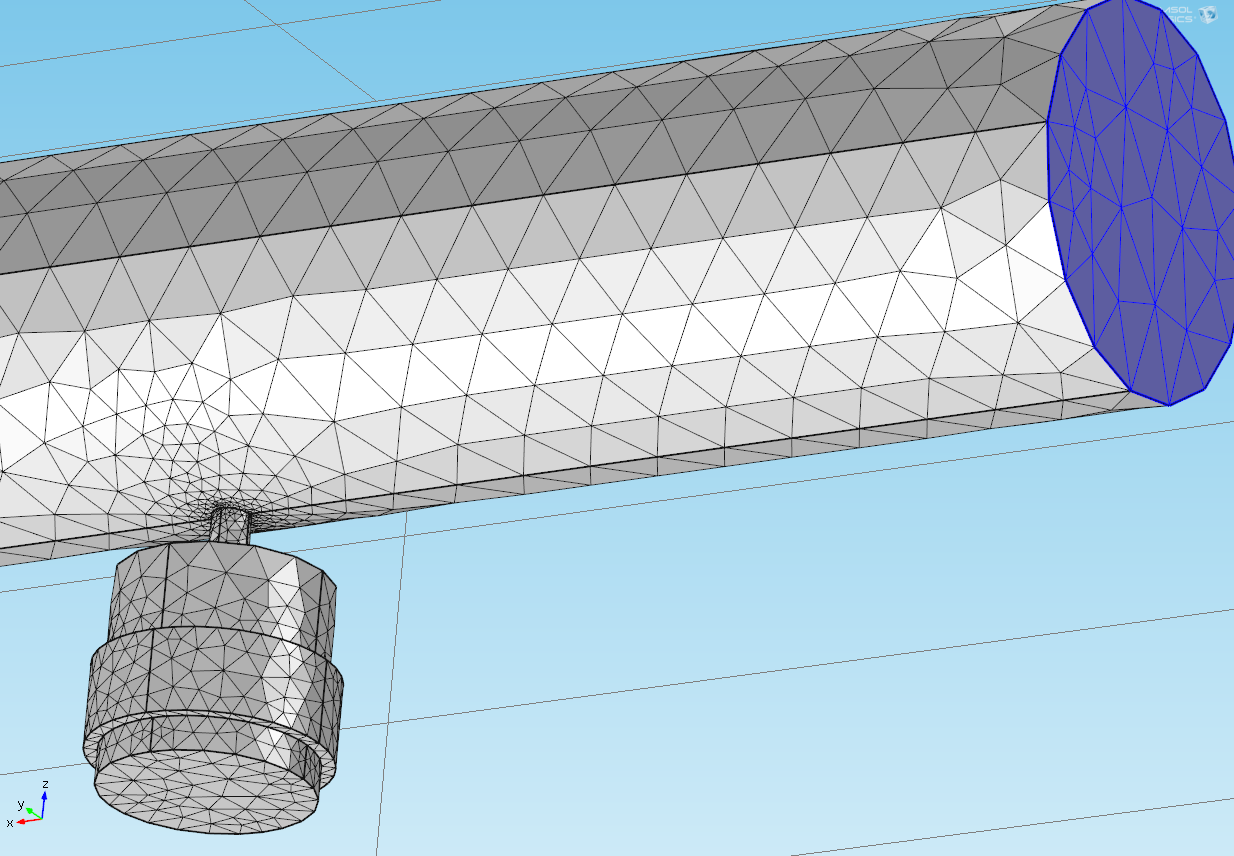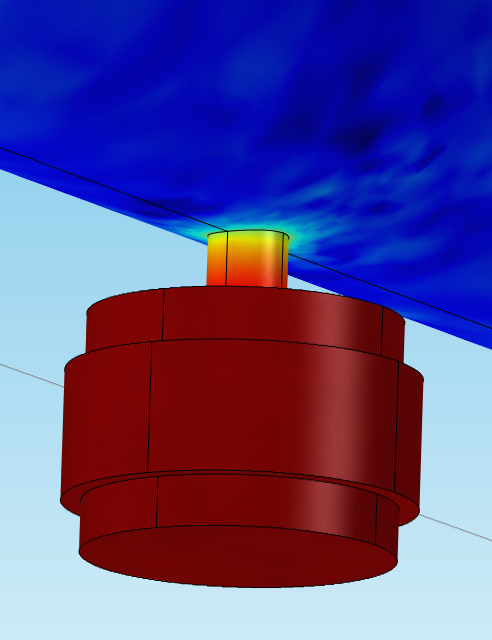

Welcome to the personal website of Frits de Vos. I am an audio enthousiast: I get visibly excited when dealing with audio in all its forms. This includes mathematics, physics, signal processing, acoustics, hearing and let's not forget mixing, listening to or making music. Pretty much everything I do in daily life relates directly to audio or is a consequence of my love for audio. For instance, I never was interested in mathematics until I discovered it was a language I could use to describe, investigate and manipulate audio. The same goes for programming: it just started as a logical extension of the daily tools and frameworks for audio.
I lived in Eindhoven during my studies. As an avid reader of non-fiction (at least, I hope it's non-fiction, haha) I was happy to discover an awesome store there: Books4Life Eindhoven. Books4Life is an organisation that sells donated books to support various charities. The store functions entirely on volunteers. Just a customer at first, but it was only a matter of time before I became part of this team of beautiful people.
About 10 years ago I started playing the drums. My first band was Septfoil, with tunes varying from melancholic rock to fast black metal. My trademark: odd-time measures which sound logical (whatever that means). During that time I did some studio work and live PA after that. In 2007 I started organising "Je moeder" drum&bass parties, with breakcore and tekno added for a little extra flavour. This led to interesting cooperations with producers, djs and percussion players. Check out my radio performance with producer Maartez here.
You can find me as dj Frizzle spinning vinyl in genres like: breakcore, jungle, drum and bass, crossbreed and frenchcore. Other styles include (extremely corny) 90's house, hardcore, gabber and raw electro. You can check out some of my (usually woefully outdated) mixes on Soundcloud and Mixcloud.
Besides audio I also like to watch cartoons, mostly focussed on adults. Did I mention I like music? As a natural archivist I keep track of these kind of things. This also spurs my interest in the preservation, rescue, conversion and physical format of media. In time, you'll find many lists, tutorials and explanations here that delve into these subjects. I want to share them in the hope they will be useful. No guarantees though ;) The header image at the top is a Cubist interpretation of the amen break.
From 2007 to 2008 I studied sonology at the conservatory in The Hague. After passing my propedeutic exam I switched to audiology. The Institute of Sonology was a great place to express myself musically, learn about compositional techniques and dive into the science behind signals and systems. However, the engineering part of the curriculum was a lot smaller than I had anticipated.
That's why I switched to audiology in 2008, which was a much better match for me. Audiology is the study of hearing and sound. As such, it has a great mix of clinical and technical subjects. On the one hand clinical subjects like the anatomy and physiology of hearing; pathology, diagnostics and treatment of hearing problems; on the other hand technical subjects like (measuring) room acoustics, abating noise problems, analog and digital signal processing and the physics of sound in great detail.
My internship was at an engineering company. This was my first acquaintance with programming. Technically speaking, with scripting since GNU Octave is a scripting language. The assignment was to implement ISO1996-2:2007, Annex C. When noise contains tonal components it tends to be more annoying than just noise. That's why ISO1996-2:2007 adds a malus to the measured levels if the noise of a corporation contains tonal components. Annex C defines a automated procedure to detect tones in noise based on a psychoacoustic model.
My graduation topic at Holst Centre: 'Helmholtz resonators as an air flow-driven source of vibration for energy harvesting with piezoelectric cantilevers'. This is quite a mouthful to say sound can be used to generate electricity! A piezoelectric material with two electric poles will cause a potential difference across them when it bends or contorts. Figure 1 shows a piezoelectric cantilever with its leads to the right to connect it to power/charging circuitry. The cantilever acts like a tiny diving board moving up and down (Figure 2), creating an alternating current. It will have a natural frequency, at which the board "prefers" to vibrate. A Helmholtz resonator looks like a typical bottle. Blow over a bottle and you'll get a certain tone. If the bottle is tuned to the natural frequency of the diving board we can optimise the combination to generate as much electricity as possible. Figure 3, 4 and 5 show some of the simulations performed during this study.





After my graduation project I did a minor in iOS-development. I was lucky to be part of a bright team of fellow students with complementary skills. Together we did a pilot project for a company to make e-health apps. We developed two proof-of-concepts: a telemonitoring application for physicians and an application for patients to submit data for the telemonitoring. Wanna hear something funny? I don't even own a smartphone at the time. :P
Together with an art student I'm doing a project about Chladni figures. We've tested several set-ups and materials and made a video of the results. Besides the Chladni figures we want to show the software I wrote for frequency control, at the same time. We are looking into ways to integrate what happens on screen with what happens on the resonating object. To make near-perfect circles and other shapes, I code them using scalable vector graphics, which are then used as input for a laser cutter.
Room acoustics and acoustic treatment are two of my favorite audio subjects. It had been a few years, so I refreshed my knowledge on the matter first. Then I designed and built a RPG Skyline diffusor, followed by a bass trap for use in a home studio. I wrote a little program for OS X to calculate room modes and turned that into my first Android thingy ever. Right now I'm studying up on acoustics in non-rectangular rooms with compliant walls, which are more challenging to model and measure.
From the it-is-not-broken-until-I-throw-it-out-the-window dept.: about twice a month I service devices from everyone and their mom or their next-door neighbour's uncle. Upgrade or reinstall an OS, configure a router, turn two corpses into a living Frankenstein, save a machine that's "too old" from dumpster death with a little hardware maintenance and a lightweight distro, you know... random-miscellaneous-yet-kind-of-similar stuff.
I am fairly agnOStic by the way, running OS X El Capitan, Windows 7 and Ubuntu 16.04 in holy trinity side by side. Sometimes, the best tool for a particular task comes on one platform only. A great piece of external hardware might get support for just one operating system. Things which just work (nicely) in one OS are more cumbersome in others. Oh and let's not forget the desktop machines: Lubuntu (old machine with floppy drive), XP (other legacy hardware) and MS-DOS (because Fast Tracker on a noisy ISA sound card is awesome). A Windows 10 preview currently runs inside a VM.
Enough about me, what about you? Got something cool? Need help? Want me to save the earth as a Power Ranger? Talk to me! To send me electronic mail (and because only Monty Python's spam is cool) use your brain, please.
Flip this: cisummol,
Shift+2 or your keyboard/mobile equivalent,
then add gmail dot (.) com
Alternatively, run this in Bash:
echo -n $(printf "cisummol" | rev) && printf "\100snail\056com\n" | tr 'sn' 'gm'